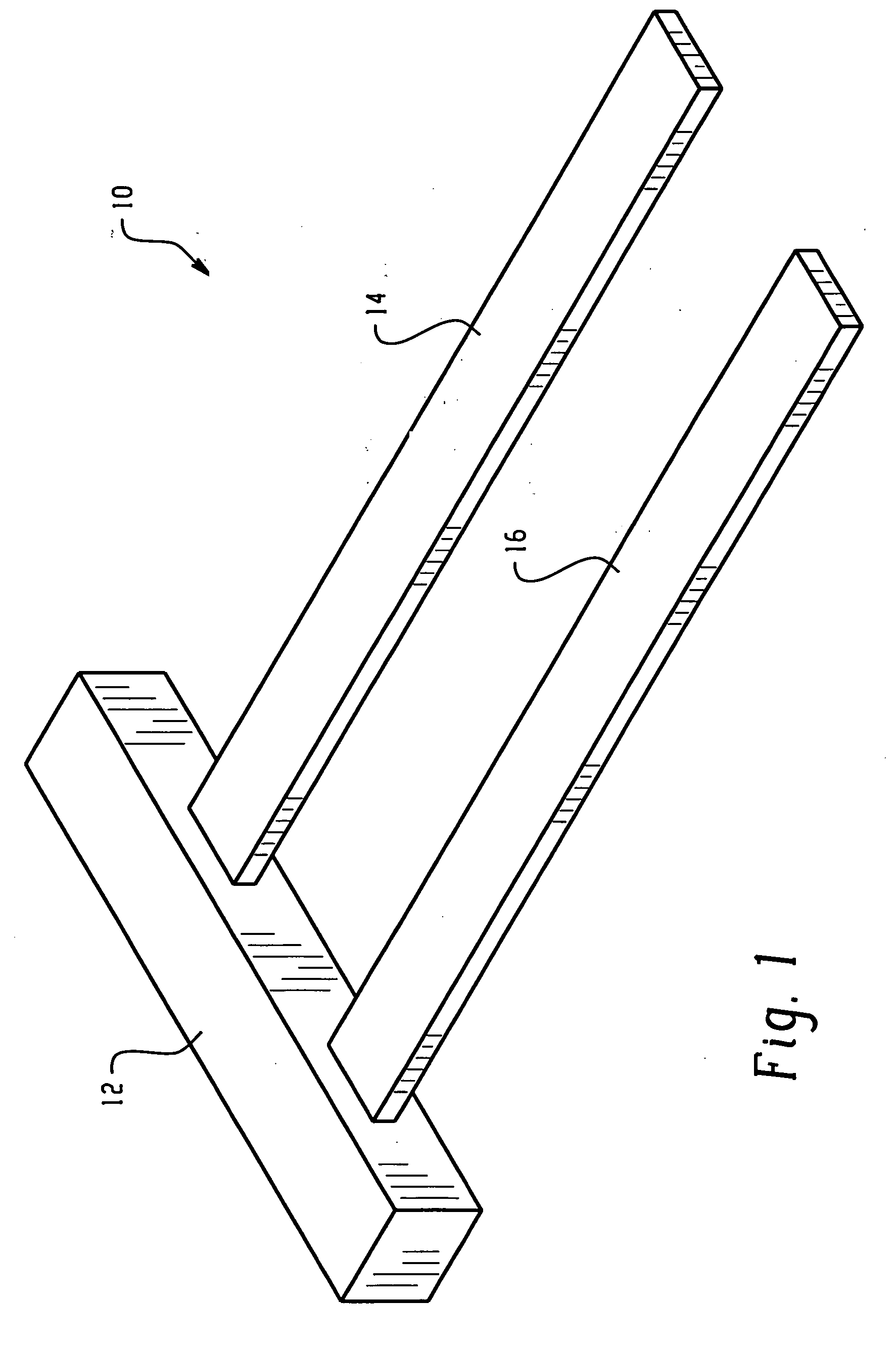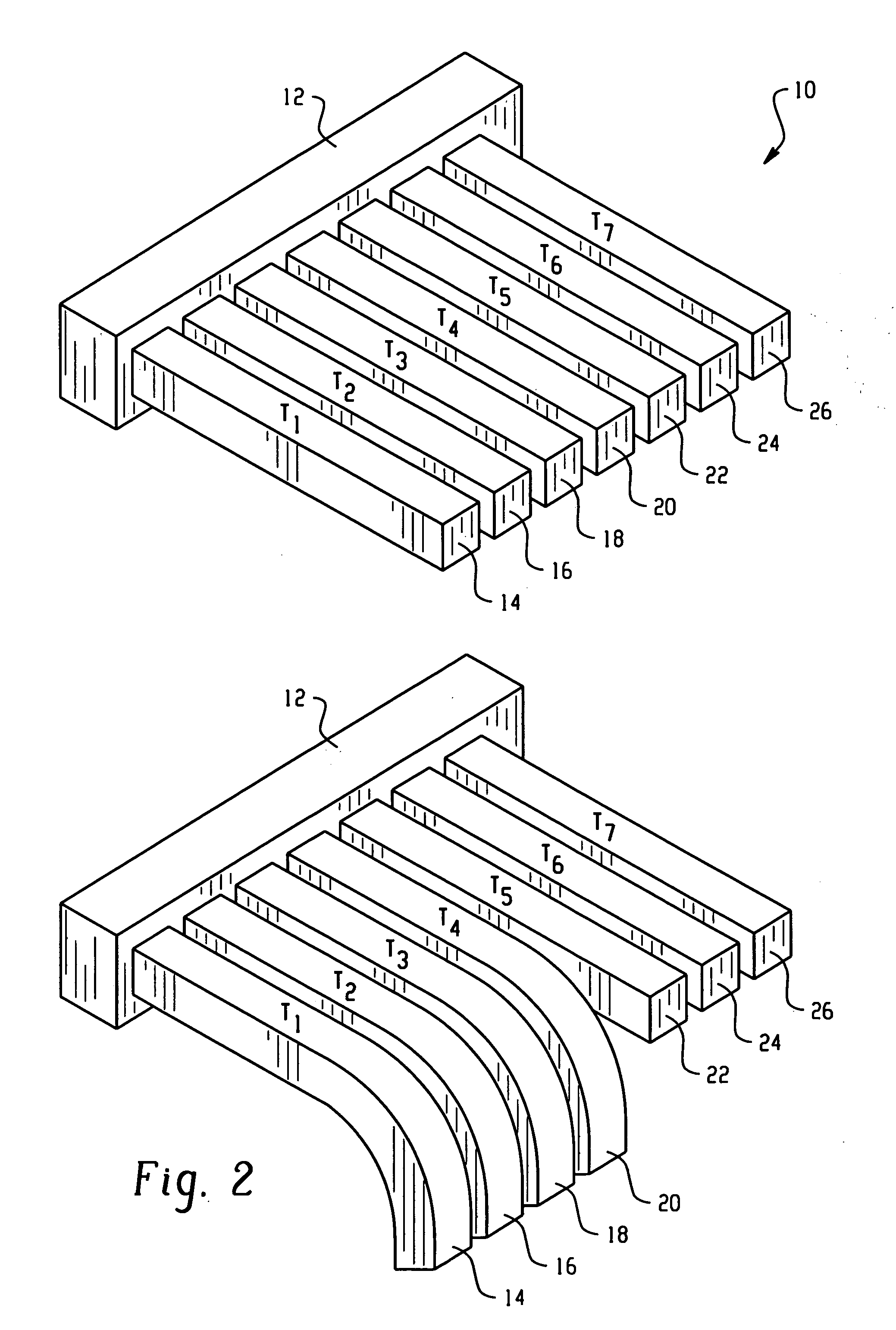Shape memory polymer temperature sensing devices and methods of use
a shape memory polymer and temperature sensing technology, applied in the field of temperature sensing, can solve the problems of leaking potentially toxic fluids into the environment, limiting the use of existing temperature sensing devices, and adding the cost of what may already be an expensive device, so as to achieve the effect of increasing flexibility and reducing stiffness
- Summary
- Abstract
- Description
- Claims
- Application Information
AI Technical Summary
Benefits of technology
Problems solved by technology
Method used
Image
Examples
Embodiment Construction
[0014] Methods and devices for sensing temperature are disclosed herein. In contrast to the prior art, the methods and devices disclosed herein advantageously are based on shape memory polymers (SMPs). As used herein, the term “shape memory polymer” generally refers to a polymeric material, which exhibits a change in a property, such as an elastic modulus, a shape, a dimension, a shape orientation, or a combination comprising at least one of the foregoing properties upon application of a thermal activation signal.
[0015] Also, as used herein, the terms “first”, “second”, and the like do not denote any order or importance, but rather are used to distinguish one element from another, and the terms “the”, “a”, and “an” do not denote a limitation of quantity, but rather denote the presence of at least one of the referenced item. Furthermore, all ranges disclosed herein are inclusive of the endpoints and independently combinable.
[0016] Generally, SMPs are phase segregated co-polymers co...
PUM
 Login to View More
Login to View More Abstract
Description
Claims
Application Information
 Login to View More
Login to View More - R&D
- Intellectual Property
- Life Sciences
- Materials
- Tech Scout
- Unparalleled Data Quality
- Higher Quality Content
- 60% Fewer Hallucinations
Browse by: Latest US Patents, China's latest patents, Technical Efficacy Thesaurus, Application Domain, Technology Topic, Popular Technical Reports.
© 2025 PatSnap. All rights reserved.Legal|Privacy policy|Modern Slavery Act Transparency Statement|Sitemap|About US| Contact US: help@patsnap.com


